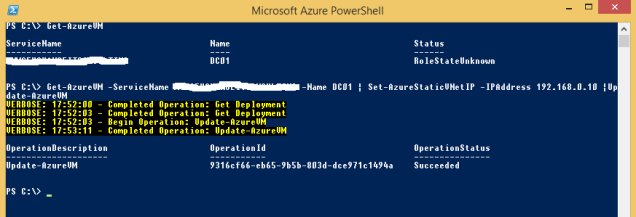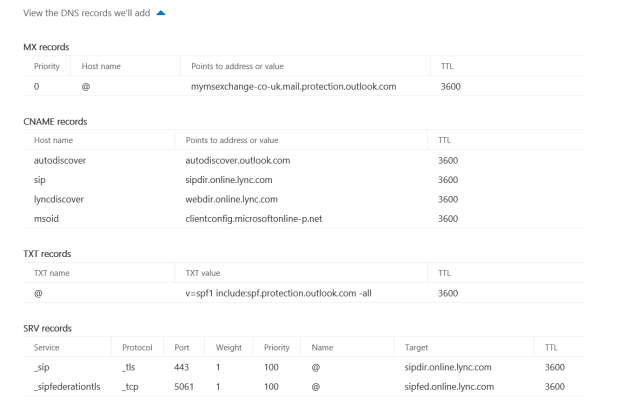This blog post will quickly show you how you can assign a static IP address to one of yours Microsoft Azure Virtual Machines, using the Microsoft Azure Powershell.
Assuming that you have already created at least one virtual machine, on your Azure subscription, the first thing you need to know and do is, how to install and configure the Azure Powershell.
On the article from the above link, you can follow the instructions to install the Microsoft Azure Powershell and to connect it to your Azure subscription.
Now let’s login to the Microsoft Azure Management Portal, and start by looking at the Virtual Networks.
I created a virtual network on my subscription, named “vlan192”, and as you can see the virtual machine “DC01” got the IP address 192.168.0.4 assigned, which is part of a sub. Now I will change that IP address to one of my choosing.
Above you can see the virtual network in more detail. Before assigning a static IP address to your virtual machine, make sure the address you choose is within the usable address range of one of the subnets of your virtual network. My virtual network has two subnets.
One other thing that you need to take into account, is that when you create the Vitual Machine, you need to make sure that you assign the correct virtual network and subnet to it, as shown below:
You can always go to the Dashboard of the virtual network, and make sure that the Virtual Machine you created is listed there, and what subnet is the virtual machine using.
We can now connect to the Microsoft Azure Powershell and set the static IP. Let’s start by running the following cmdlet to see the details of the existing virtual machines:
Get-AzureVM
The cmdlet above will give you the servicename and the virtual machine name that you need to run the cmdlet that sets the static IP:
Get-AzureVM -ServiceName <ServiceName> -Name <VMName> | Set-AzureStaticVNetIP -IPAddress <StaticIP> | Update-AzureVM
Below you can see the output of the cmdlet.
And finally if you go to the properties of the virtual machine, on the Azure Management Portal, you can see that the static IP is set.
IMPORTANT NOTE:
You need to be aware is that the IP above is assigned to the specific VM. A reservation is made and therefore that will be the IP of the virtual machine as long as the reservation is kept. This does not change the network properties at the OS level. It doesn´t set the static IP there. You should now login to the virtual machine and set the static IP to match the reservation, as you are now sure that it won’t cause any IP address conflict.

















